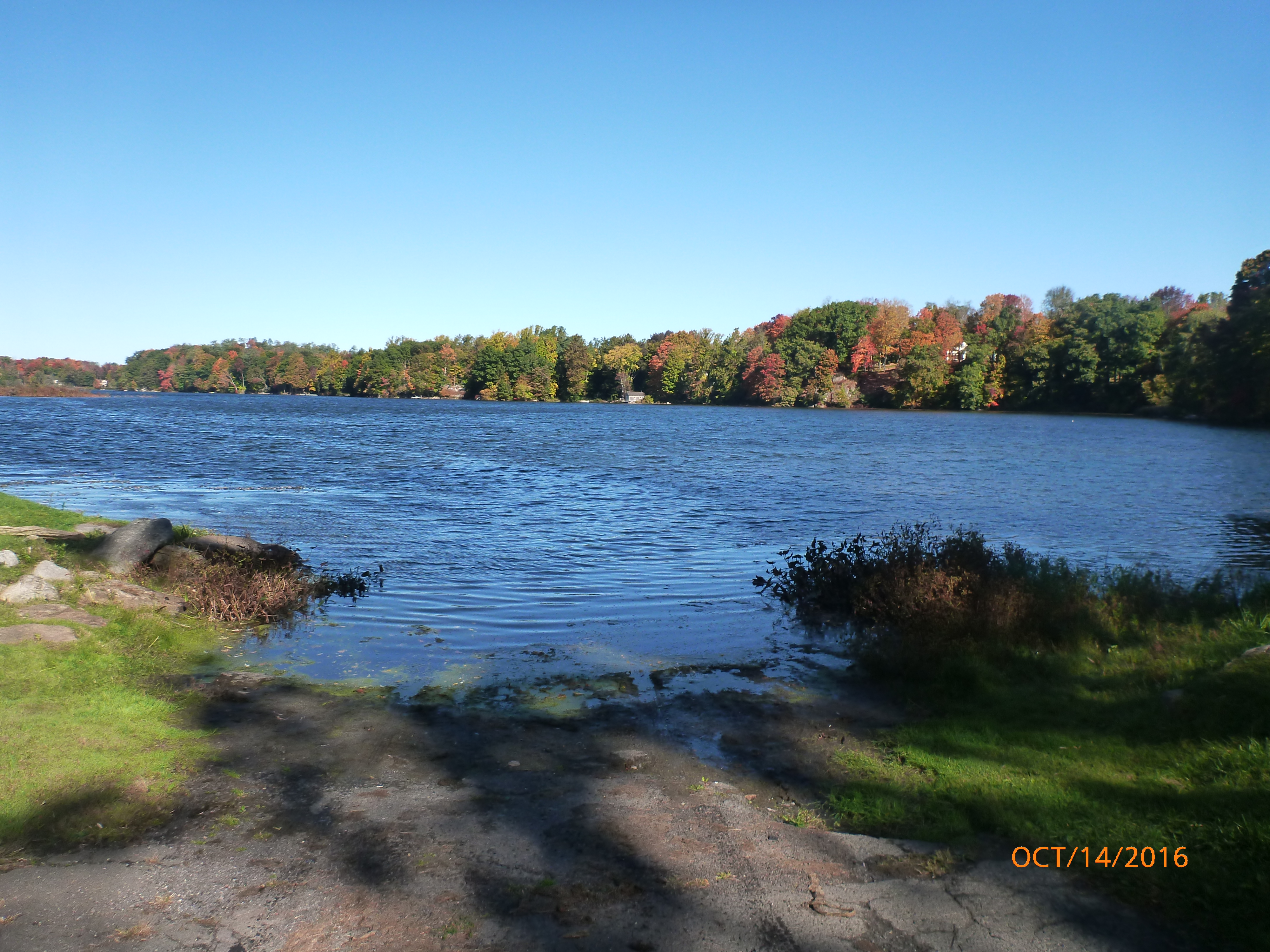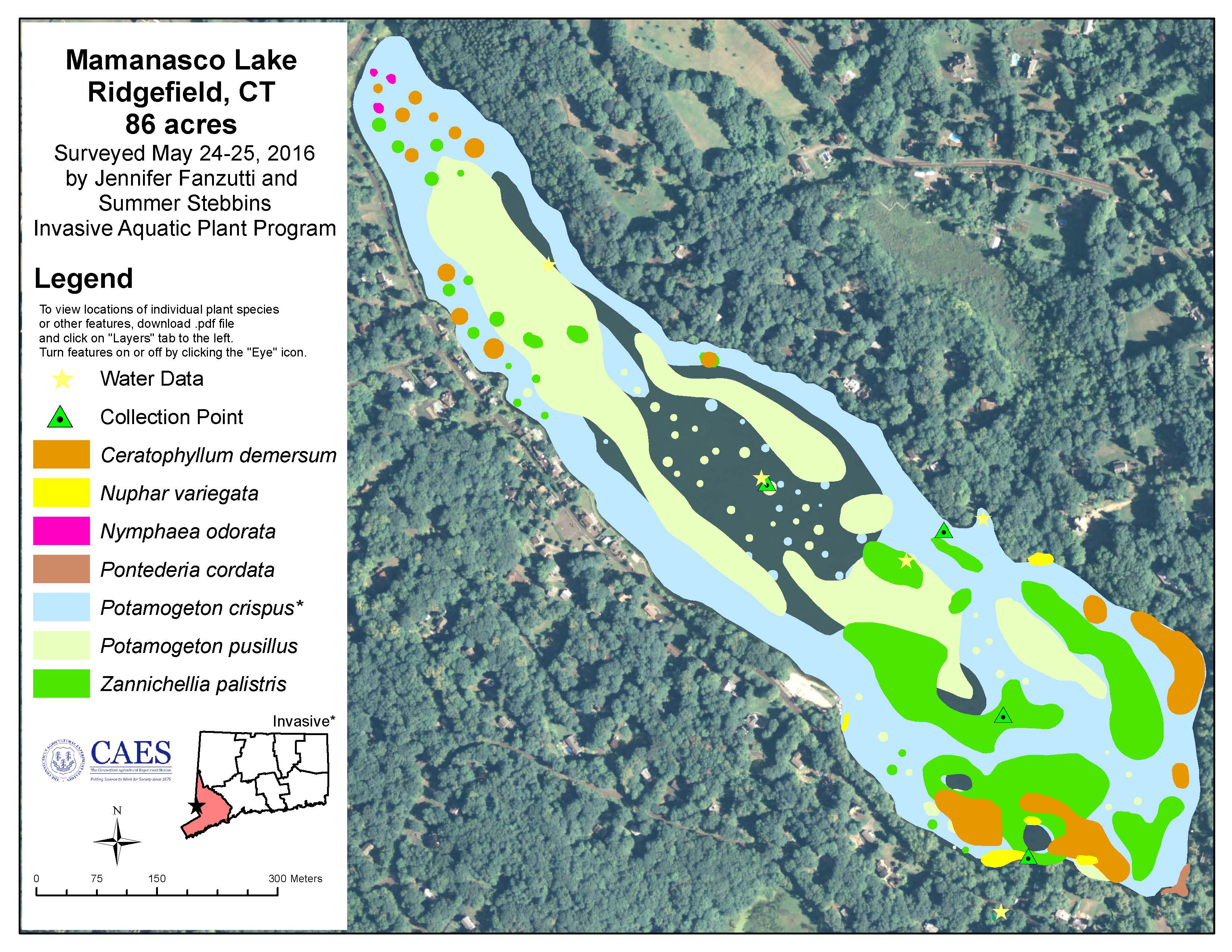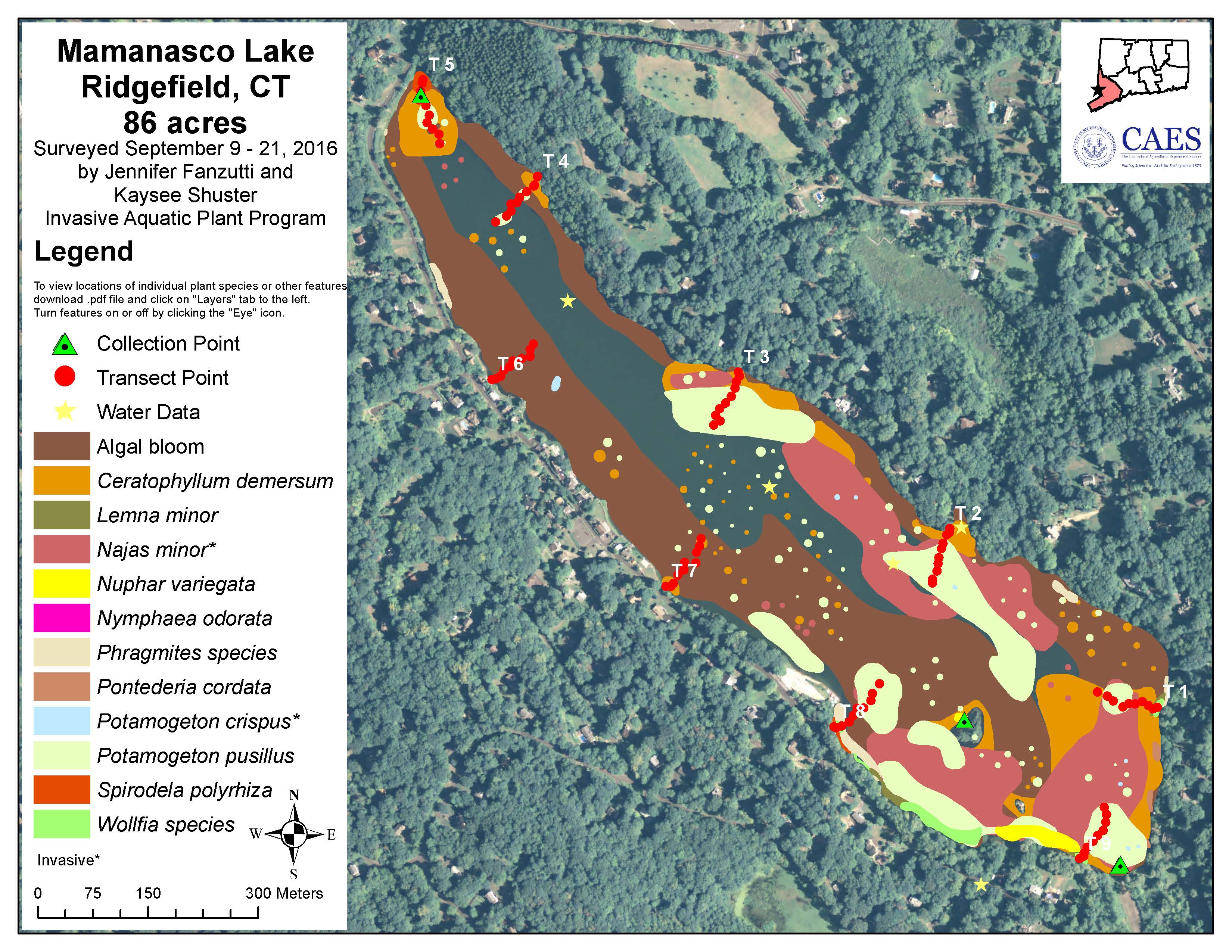Mamanasco Lake. Ridgefield - 2016
2016 Spring Aquatic Plant Survey Map of Mamanasco Lake
2016 Summer Aquatic Plant Survey Map of Mamanasco Lake
Mamanasco Lake is an 86-acre waterbody located in Ridgefield, CT. It has a maximum depth of 3.3 meters (m) and an average depth of 2.2 m. The lake's shallow nature and organic-rich sediment makes its entire bottom suitable for luxuriant plant growth. This is the third Connecticut Agricultural Experiment Station (CAES) Invasive Aquatic Plant Program (IAPP) survey of Mamanasco Lake’s aquatic vegetation and water chemistry. Our first survey in August 2005 was part of the CAES IAPP effort to quantify the extent of Connecticut’s invasive aquatic plant problem. We found Mamanasco Lake’s vegetation to be mainly invasive Eurasian watermilfoil (Myriophyllum spicatum). As part of this initial survey, we set up nine georeferenced transects. Each contained 10 points where plant species, abundance and sediment type were recorded. These points could then be revisited in future years to quantify changes. Water clarity, dissolved oxygen and temperature profiles were also recorded and water samples were tested for pH, alkalinity, conductivity and total phosphorus. Mamanasco Lake was determined to be a shallow eutrophic waterbody prone to nuisance vegetation problems. The lake was resurveyed by CAES IAPP in 2012 using identical protocols. Eurasian watermilfoil was found to be extremely sparse and more native species were present. It was presumed that the changes in the composition of aquatic plant species were due to ongoing nuisance plant management particularly herbicide applications. The details of the nuisance plant management practices performed in past years were not available for this report. Our 2016 surveillance was more extensive than in previous years and consisted of complete vegetative surveys in May and September, as well as monthly water sampling from three in-lake sites and a site at the lake’s inlet and outlet.
The shallow nature and fertile sediment of Mamanasco Lake makes it prime habitat for aquatic vegetation and algae. Eleven plant species occurred in the lake in 2016 with curlyleaf pondweed (Potamogeton crispus) and minor naiad (Najas minor) being invasive. Curlyleaf pondweed is the biggest problem in the spring, while algal mats and native species like small pondweed become a nuisance in the summer. Long-term control would be best accomplished by dry dredging. This is usually not practical unless the sediment and under burden can be sold. Lake Mamanasco's water is alkaline and eutrophic. It likely receives most of its nutrients from internal loading. Without sediment removal this is unlikely to change. The lake's water chemistry makes it highly suitable for invasive curlyleaf pondweed, Eurasian watermilfoil, and minor naiad. Zebra mussels will also be well suited to this lake. The apparent elimination of Eurasian watermilfoil from Mamanasco Lake where it dominated the plant community in our 2005 survey is remarkable.
CAES IAPP 2016 Mamanasco Lake Report.
| Plants in Mamanasco Lake 2005, 2012, and 2016 | |||||
| Scientific Name | Common Name | 2005 | 2012 | 2016 Spring | 2016 Late Summer |
| Ceratophyllum demersum | Coontail | X | X | X | |
| Eichhornia crassipes* | Common water hyacinth | X | |||
| Eleocharis species | Spikerush | X | |||
| Lemna minor | Common duckweed | X | X | X | |
| Ludwigia species | Primrose-Willow | X | |||
| Myriophyllum spicatum* | Eurasian watermilfoil | X | X | ||
| Najas minor* | Minor naiad | X | X | ||
| Nuphar variegata | Yellow water lily | X | X | X | X |
| Nymphaea odorata | White water lily | X | X | X | |
| Phragmites australis | Common reed | X | |||
| Pontederia cordata | Pickerelweed | X | X | X | |
| Potamogeton crispus* | Curlyleaf pondweed | X | X | X | |
| Potamogeton pusillus | Small pondweed | X | X | X | |
| Spirodela polyrhiza | Great duckweed | X | |||
| Wolffia specie | Watermeal | X | |||
| Zannichellia palustris | Horned pondweed | X | |||
| *Invasive Species | Total | 4 | 11 | 7 | 11 |




